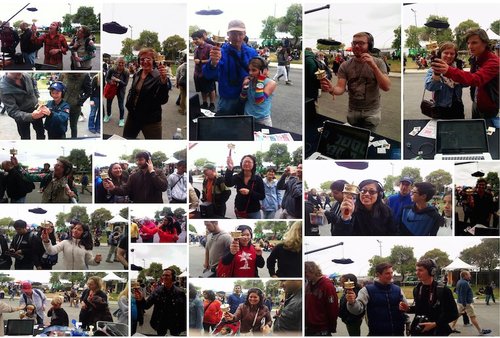Research
Gestural Control | Instrument and System Design | Embodied Sonic Meditation
Instrument and System Design

Introduction
The Tibetan Singing Prayer Wheel is a hybrid of a traditional spiritual instrument, the prayer wheel, and a traditional acoustic musical instrument, the Tibetan singing bowl, both of which are shown here below. The spiritual practice of the prayer wheel in Buddhism can be traced back two thousand years to Mahāyāna Buddhist philosopher Nāgārjuna. A Prayer Wheel consists of a free-spinning cylinder attached to a handle, which contains a multitude of prayers printed on a long roll of paper; it can be made in a wide range of sizes, styles, and materials. It is believed that spinning the wheel with a simple and repetitive motion induces relaxation and calm in the person performing the motion. A prayer wheel is often spun while chanting mantras. Clinical and scientific studies show evidence that prayer wheel practice can efficiently help to reduce anxiety and depression, increase well-being, and improve the outcomes in medicine and counselling. The Tibetan Singing Bowl is well known as a musical instrument. Rubbing a wooden stick in slow circular motion around the outer rim of the metal bowl at the appropriate speed and pressure excites a harmony of resonances. Due to its soothing and meditative musical nature, it is widely used in music therapy. In our Tibetan Singing Prayer Wheel, we create a new musical interface that combines the sounds and the gestures of playing the singing bowl with the gestures of the prayer wheel, along with voice modulation, using electronics and software.

(Left) Spinning a Prayer Wheel. (Right) Playing a Tibetan Singing Bowl
System Architecture
The performer gives the system three inputs: vocals via a microphone, spinning and motion gestures from an electronically augmented prayer wheel, and button presses on a four-button RF transmitter to toggle sound processing layers. These inputs activate a virtual singing bowl, real-time sound synthesis, and voice processing. Finally, the resulting audio signal is amplified and projected into the performance space.

General system overview
Experimental Results
The experimental results include a network concert and three interactive installations. The concert was dedicated to the influential Buddhist scholar Khenpo Sodargye Rinpoche (索达吉堪布), who attended the concert along with approximately 400 other audience members. The Tibetan Singing Prayer Wheel was successfully integrated into multiple pieces with both traditional Buddhist instruments and a variety of electronic instruments. For The art installations, around 200 people from the Makerfaire, and another 100 people both from the End of Year Show at UCSB, and from NIME (New Interfaces for Musical Expression), performed trials on playing the Prayer Wheel. We observed that using this interface helps laypersons and children experience sound in an intimate and fun way. People’s overall engagement experience with the sound was positive.


References
- Tibetan Singing Prayer Wheel: A Hybrid Musical- Spiritual Instrument Using Gestural Control. In proceedings of the 15th International Conference on New Interface for Music Expression (NIME). Baton Rouge, LA. USA.